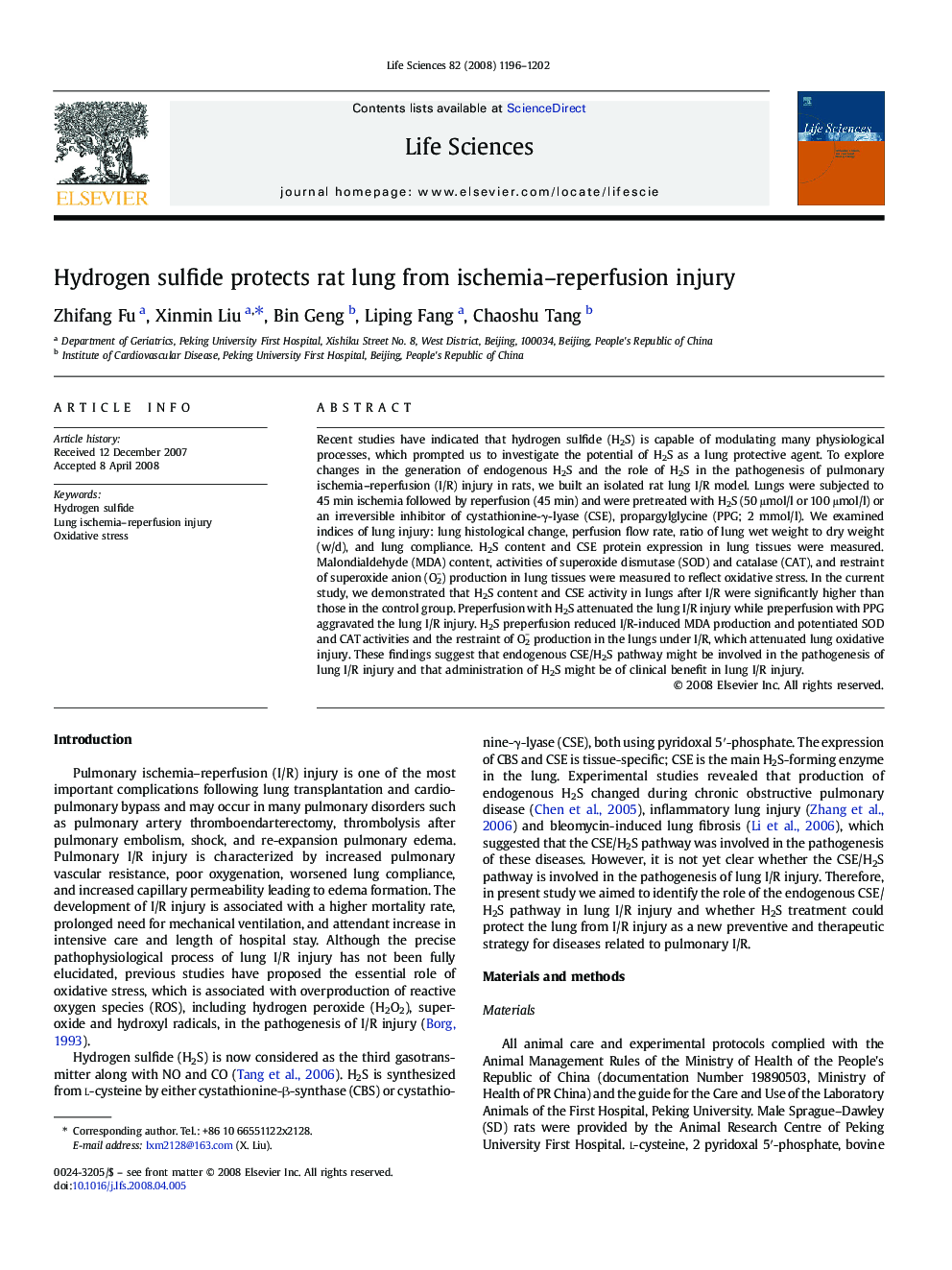| Article ID | Journal | Published Year | Pages | File Type |
|---|---|---|---|---|
| 2553679 | Life Sciences | 2008 | 7 Pages |
Abstract
Recent studies have indicated that hydrogen sulfide (H2S) is capable of modulating many physiological processes, which prompted us to investigate the potential of H2S as a lung protective agent. To explore changes in the generation of endogenous H2S and the role of H2S in the pathogenesis of pulmonary ischemia-reperfusion (I/R) injury in rats, we built an isolated rat lung I/R model. Lungs were subjected to 45 min ischemia followed by reperfusion (45 min) and were pretreated with H2S (50 μmol/l or 100 μmol/l) or an irreversible inhibitor of cystathionine-γ-lyase (CSE), propargylglycine (PPG; 2 mmol/l). We examined indices of lung injury: lung histological change, perfusion flow rate, ratio of lung wet weight to dry weight (w/d), and lung compliance. H2S content and CSE protein expression in lung tissues were measured. Malondialdehyde (MDA) content, activities of superoxide dismutase (SOD) and catalase (CAT), and restraint of superoxide anion (O2â) production in lung tissues were measured to reflect oxidative stress. In the current study, we demonstrated that H2S content and CSE activity in lungs after I/R were significantly higher than those in the control group. Preperfusion with H2S attenuated the lung I/R injury while preperfusion with PPG aggravated the lung I/R injury. H2S preperfusion reduced I/R-induced MDA production and potentiated SOD and CAT activities and the restraint of O2â production in the lungs under I/R, which attenuated lung oxidative injury. These findings suggest that endogenous CSE/H2S pathway might be involved in the pathogenesis of lung I/R injury and that administration of H2S might be of clinical benefit in lung I/R injury.
Keywords
Related Topics
Health Sciences
Medicine and Dentistry
Cardiology and Cardiovascular Medicine
Authors
Zhifang Fu, Xinmin Liu, Bin Geng, Liping Fang, Chaoshu Tang,
